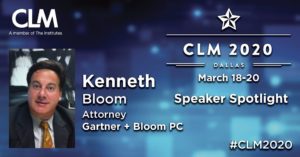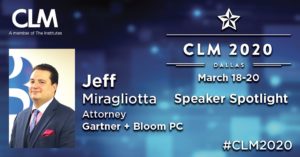Early Motion to Dismiss Granted
Associate Robert Fanning succeeded in securing a dismissal for the Firm’s client, Tudor Insurance Company, in a lawsuit brought by a building owner against a contractor and the contractor’s insurer (Tudor). Robert drafted and argued the motion in Supreme Court, New York County, before Justice Shlomo Hagler, who summarily dismissed the claim from the bench.
Proper analysis of the insurance law was the key to this successful result, but the strategic decision to make this motion early was the key to the client avoiding significant legal fees exposure.
The case is Skibar v. 338 West 15th Street, LLC, Index No. 157241/2018.
Proper analysis of the insurance law was the key to this successful result, but the strategic decision to make this motion early was the key to the client avoiding significant legal fees exposure.
The case is Skibar v. 338 West 15th Street, LLC, Index No. 157241/2018.
2020 Toy Drive for Jersey Cares Frosty’s Friends
 December 22, 2020 Alexander Fisher, a partner in our New Jersey office, spearheaded a toy drive this year for Jersey Cares Frosty's Friends program, which provides holiday gifts for needy children in New Jersey. Thanks to the generous contributions and involvement of so many of our attorneys and staff, our team provided gifts for over 50 children this year. As always, we are grateful to be able to give back to our community during this holiday season. Wishing Happy Holidays to all!
December 22, 2020 Alexander Fisher, a partner in our New Jersey office, spearheaded a toy drive this year for Jersey Cares Frosty's Friends program, which provides holiday gifts for needy children in New Jersey. Thanks to the generous contributions and involvement of so many of our attorneys and staff, our team provided gifts for over 50 children this year. As always, we are grateful to be able to give back to our community during this holiday season. Wishing Happy Holidays to all!Ken Bloom named CLM Finalist for Outside Counsel Professional of the Year
Congratulations to g + b managing partner, Ken Bloom! Ken was just named one of five finalists across the nation for the Construction Litigation Management Professionals of the Year Award for Outside Counsel.
Read about the selection here:
http://bit.ly/2VavYxG
CLM CONSTRUCTION CONFERENCE IN DALLAS, TX
Partners Ken Bloom and Jeff Miragliotta will be speaking at CLM's Annual Construction Conference in Dallas this March. The CLM Construction Conference covers all aspects of insurance, risk, and claims management related to the construction industry. Ken and Jeff will be presenting on legal developments in the construction defect arena. The link to the event can be found here: http://bit.ly/2Nyi1oW
If you are in Dallas at the conference, please say hello to Jeff and Ken!


Immigration Support Affidavit: a Trap for the Matrimonial Practitioner
Partner Stuart F. Gartner and Associate Kaela A. Mahon published an article today in the New York Law Journal addressing the conflict that arises when a matrimonial agreement or judgment conflicts with support obligations contained in an immigration 'sponsor' affidavit. The article is published at https://www.law.com/newyorklawjournal/2020/01/02/affidavit-of-support-trumps-a-judgment-of-divorce/
1/2/2020
1/2/2020
Dismissal of Snow and Ice Case in Bronx County
Anne Armstrong recently obtained a dismissal of a plaintiff's complaint in the Bronx by way of a summary judgment motion that she orally argued. The plaintiff, Theresa Berrios, had sued the Firm's client - a general contractor - for injuries arising out a slip and fall on ice that had formed on a sidewalk around where the client had done construction work. After oral argument, Justice Mitchell J. Danziger dismissed the complaint. The decision is Theresa Berrios v. City of New York, index number 304746/2014, Supreme Court, Bronx County.
9/19/19
9/19/19
